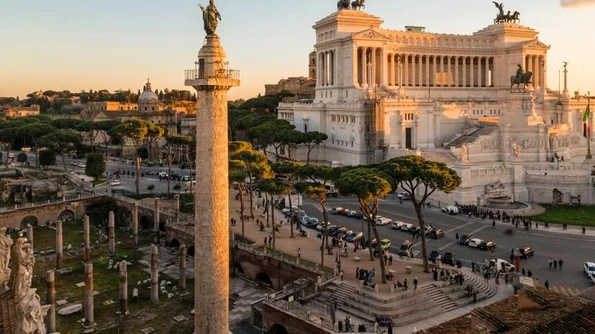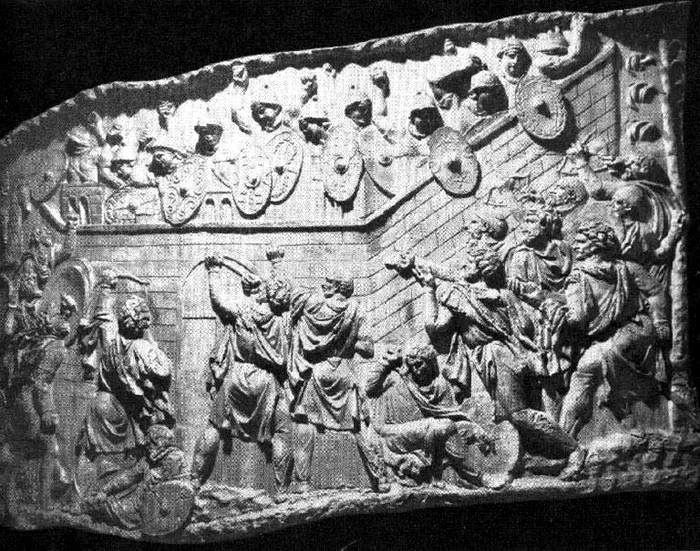
A War Diary Soars Over Rome - The story of Emperor Trajan’s victory and the 155 scenes carved in a spiral frieze on a monumental column
In back-to-back wars fought between A.D. 101 and 106, the emperor Trajan mustered tens of thousands of Roman troops, crossed the Danube River on two of the longest bridges the ancient world had ever seen, defeated a mighty barbarian empire on its mountainous home turf twice, then systematically wiped it from the face of Europe.
Trajan’s war on the Dacians, a civilization in what is now Romania, was the defining event of his 19-year rule. The loot he brought back was staggering. One contemporary chronicler boasted that the conquest yielded a half million pounds of gold and a million pounds of silver, not to mention a fertile new province.
The booty changed the landscape of Rome. To commemorate the victory, Trajan commissioned a forum that included a spacious plaza surrounded by colonnades, two libraries, a grand civic space known as the Basilica Ulpia, and possibly even a temple. The forum was “unique under the heavens, ” one early historian enthused, “beggaring description and never again to be imitated by mortal men.”

Daci atacând o fortăreață romană, reprezentare de pe Columna lui Traian
Towering over it was a stone column 126 feet high, crowned with a bronze statue of the conqueror. Spiraling around the column like a modern-day comic strip is a narrative of the Dacian campaigns:Thousands of intricately carved Romans and Dacians march, build, fight, sail, sneak, negotiate, plead, and perish in 155 scenes. Completed in 113, the column has stood for more than 1, 900 years.
Today tourists crane their necks up at it as guides explain its history. The eroded carvings are hard to make out above the first few twists of the story. All around are ruins—empty pedestals, cracked flagstones, broken pillars, and shattered sculptures hint at the magnificence of Trajan’s Forum, now fenced off and closed to the public, a testament to past imperial glory.
The column is one of the most distinctive monumental sculptures to have survived the fall of Rome. For centuries classicists have treated the carvings as a visual history of the wars, with Trajan as the hero and Decebalus, the Dacian king, as his worthy opponent. Archaeologists have scrutinized the scenes to learn about the uniforms, weapons, equipment, and tactics the Roman Army used.
And because Trajan left Dacia in ruins, the column and the remaining sculptures of defeated soldiers that once decorated the forum are treasured today by Romanians as clues to how their Dacian ancestors may have looked and dressed.
The column was deeply influential, the inspiration for later monuments in Rome and across the empire. Over the centuries, as the city’s landmarks crumbled, the column continued to fascinate and awe. A Renaissance pope replaced the statue of Trajan with one of St. Peter, to sanctify the ancient artifact. Artists lowered themselves in baskets from the top to study it in detail. Later it was a favorite attraction for tourists:Goethe, the German poet, climbed the 185 internal steps in 1787 to “enjoy that incomparable view.” Plaster casts of the column were made starting in the 1500s, and they have preserved details that acid rain and pollution have worn away.
Click here for the rest of the article on http://www.nationalgeographic.com















